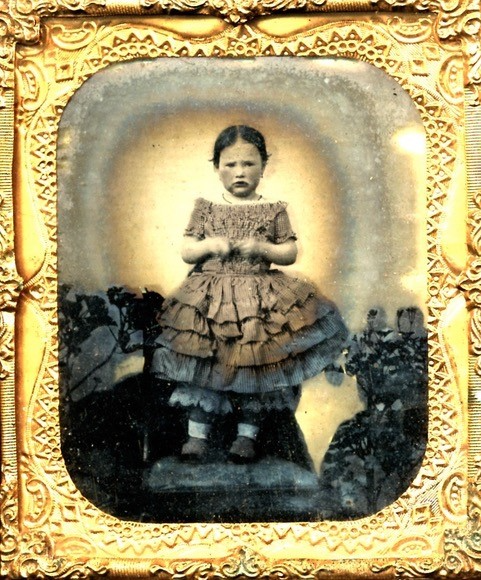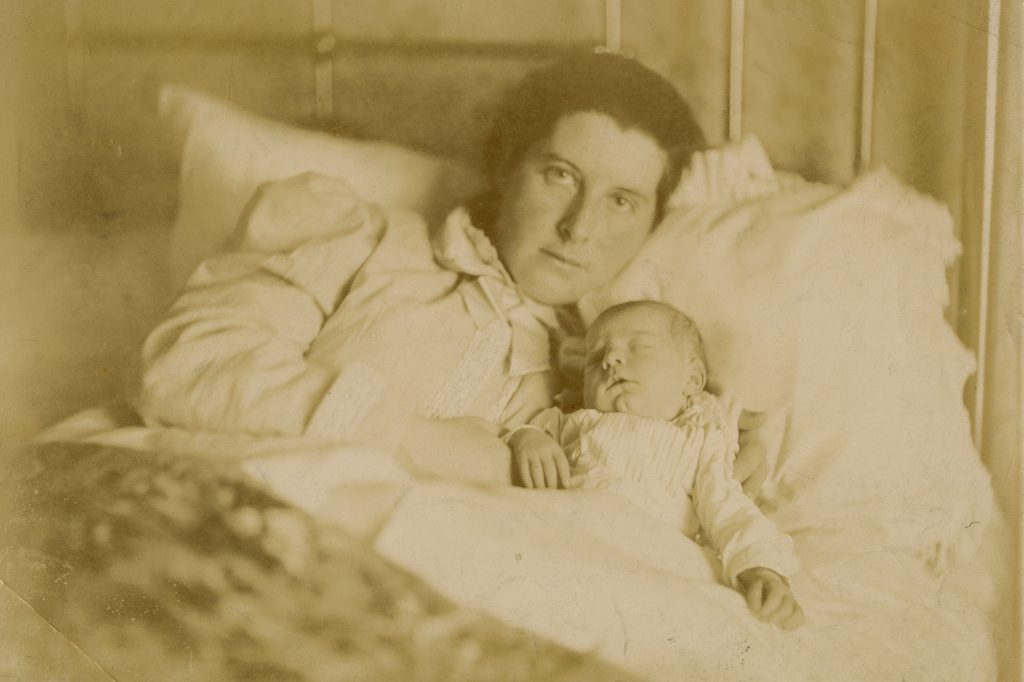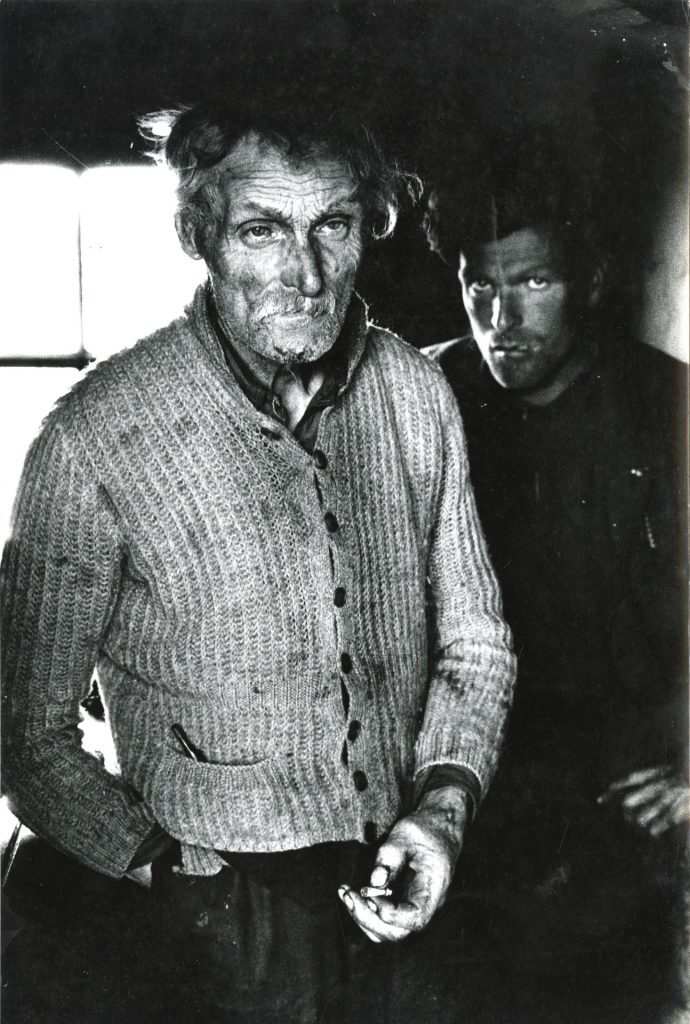The Low collection was recently gifted to the University Archive by photo-journalist Alex Low. This is the third blog exploring this fascinating collection which comprises records of not just the Low family, but also of eight other families connected to the Lows through marriage. We received the collection, partly because the Lows and the Halleys originated from Kirriemuir, Dundee and Lundie & Fowlis, but also because we hold other significant photographic collections. It seems fitting therefore that today’s blog explores the photographs in the collection.

The Low family seemed to embrace photography early, and the collection holds several daguerreotypes and ambrotypes (collodion positives) dating from the 1840s and 1860s. As expected, these tiny, framed photographs are portraits of family members, such as the one featured of Harriet Mary Low, taken around 1862 in Mexico where she was born. Harriet died in childbirth in India, aged just 26, but surviving photographs of her demonstrate the technological moves from daguerreotypes through to photographic prints, cabinet and photocards.


The problem with photographs is that often we don’t know who or where the subjects are. Fortunately for us, most of the photographs in the collection are titled, done at the time, or more recently through Alex Low’s research into the families. So we can often trace a life from birth, through school and across adulthood, gaining insights into relationships. For instance, photographs of Annie Low (1865-1946) include formal portraits, informal ones with her children and their nanny, with her mother, sisters in law and her friends, later ones with her grandchildren, and even one of her and AG Low’s first home. Apart from showing changing fashions over the decades, these photographs tell us that the family always had a dog, could afford to keep at least one servant and a carriage, that her sons went to boarding school, and that in her later years she travelled to Egypt with her husband. Other records in the collection confirm or clarify the tenor of Annie’s life, but these small visual indicators are the very powerful.

We know that AG Low was a keen amateur photographer and had his own darkroom, so it’s unsurprising that there’s a huge selection of photographs charting the lives of his family. There’s even a photo of Annie which seems to have been taken soon after the birth of Gerald. Certainly, the technology helped, enabling a move from the studio to the home. Kodak had introduced an easy-to-use box camera by the 1880s and by the turn of the century the Box Brownie was hugely popular, especially as they also produced a home developing machine, as well as a folding pocket camera designed to take postcard sized prints.
AG passed his enthusiasm to his sons, especially to AH Low, who was entering photographic competitions while at school. AH Low introduced the basic techniques to his own son, Alex Low, making use of over 20 cameras, some inherited from his own father as well as their own darkroom. Unsurprisingly perhaps, Alex grew up to be a successful photo-journalist.


Alex started his career aged 10, with his photographs appearing in the local newspaper. He developed his skills while doing National Service, then travelled around the UK and Europe building his portfolio. By 1960 he was a staff photographer with the Pictorial Press Agency, which specialised in photos of Hollywood films and their stars. Alex was introduced to one of the founders of photo-journalism, Simon Guttman, with whom he worked for two years. After a brief stint with the BBC, Alex was then invited to be the first picture editor and only staff photographer for a brand new colour supplement, the ‘Weekend Telegraph’, an exciting and daunting challenge.


During the 1960s and early ‘70s, Alex worked on major picture stories in many parts of the world, alongside pictures of fashion, food and people. His assignments included the Isle of Wight pop festival, Californian hippy communes, Club Méditerranée, and the drug problem in Hong Kong. As picture editor, Alex was also responsible for organising coverage of Winston Churchill’s state funeral, a massive undertaking done in just five days.
In the field, Alex covered stories such as the war between India and Pakistan in 1965, at one point being ‘jumped on’ by guards after taking photographs of tanks that Pakistan had denied having. He then had to flee the country when the government demanded he hand over his film. Despite escaping and freighting his films back to London, the story never appeared as a ceasefire was agreed. Learning from this experience he avoided the Americans confiscating film he’d taken on assignment in Thailand, substituting the exposed film with blank rolls before having to surrender his cameras. The story, about Chinese military activity around Chieng Kong, was obviously a sensitive one for the USA who returned his cameras but continued to watch and follow Alex during his trip.


For one story, ‘Ruins of Empire’, Alex travelled 8,000 miles in 6 weeks, by road, rail and air, right across India and Pakistan, photographing places and people left over from British rule. He also covered the famine in Bihar, taking sacks of rice with him which he distributed, feeling that ‘it was such a tiny drop in the ocean of starving people that I felt it was almost an insult, a pointless gesture’.

By 1980, Alex had retired from photojournalism. Perhaps he’d tired of dodging danger and leaving his family for weeks on end. But we’ll soon find out, as Alex is sending us instalments of his biography which are being added to the collection.
The Low family collection is a rich and varied one. The material offers insights about eight families and the times in which they lived. We can learn about their childhoods, their working and leisure lives, their problems, joys, and their family relationships. It is an extraordinary intimate record of over two centuries and well worth exploring.
Search the Alex Low collection for more descriptions of photographs and Alex’s assignments.
Although working in colour for the Weekend Telegraph and other publications, Alex always preferred monochrome as making a more striking image, hence his examples are featured here in black & white.
